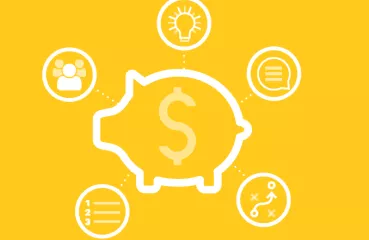Beacon Interfaith Housing Collaborative participates in a pilot to bring deep solar savings to five of its affordable housing properties.
In the community lounge of Abbott View Apartments, there’s many causes for celebration!
 First, those ‘Cooperative Energy Futures’ folks just installed bright new LED light bulbs in the lounge. Second, some Abbot View-ers are trying sambusas for the first time… and have just found their new favorite restaurant. Third, the TV is playing drone footage of the big, shiny new solar panels on their roof (several cheers of ‘I told you they were real!’ were directed at the doubters). But the cause for celebration that dwarfed them all was residents’ feeling that they were involved in getting those panels up there and that they helped their neighbors achieve deep energy savings on their electric bills.
First, those ‘Cooperative Energy Futures’ folks just installed bright new LED light bulbs in the lounge. Second, some Abbot View-ers are trying sambusas for the first time… and have just found their new favorite restaurant. Third, the TV is playing drone footage of the big, shiny new solar panels on their roof (several cheers of ‘I told you they were real!’ were directed at the doubters). But the cause for celebration that dwarfed them all was residents’ feeling that they were involved in getting those panels up there and that they helped their neighbors achieve deep energy savings on their electric bills.
Abbott View is an affordable apartment complex owned by Beacon Interfaith Housing Collaborative, a mission-driven affordable housing developer and property owner in the Twin Cities. Beacon operates over 700 units of housing, 85% of which is deeply affordable. Kevin Walker, Beacon’s Vice President of Housing Development, has been strategizing about not just how to solarize each of Beacon’s properties, but also how to pass those energy savings to the families who live there. He applied for a CERTs Seed Grant to participate in an exciting solar pilot and do just that.

 To break it down, the Affordable Solar panels are installed on the roof of the building receiving the benefits, and the panels are wired directly into each participating resident’s meter. Community solar is usually installed off-site and members of the general public can subscribe; since CEF’s Affordable Solar program is designed specifically for the affordable housing residents who live in the building their solar panels are installed on, the program can use additional solar incentives that are specific to affordable housing with income-qualified residents.
To break it down, the Affordable Solar panels are installed on the roof of the building receiving the benefits, and the panels are wired directly into each participating resident’s meter. Community solar is usually installed off-site and members of the general public can subscribe; since CEF’s Affordable Solar program is designed specifically for the affordable housing residents who live in the building their solar panels are installed on, the program can use additional solar incentives that are specific to affordable housing with income-qualified residents.  Of course, when you’re doing solar work as cool as this, you can’t not party at the end! Alice, Community Power’s Energy Democracy staffperson, recalls some sentimental conversations she had at the celebration and attributes it to the way the outreach process deeply engaged residents and the way the Affordable Solar program is designed: “We had someone say, ‘When we’ve gotten help from other places, we’ve felt kind of bad afterwards, this was a really good experience.’” Alice continued by emphasizing what makes this project special to affordable housing residents. “This is real. This is for you. You are included. And by the way, it’s stabilizing your housing costs and there’s ways for you to be involved in this clean energy transition.”
Of course, when you’re doing solar work as cool as this, you can’t not party at the end! Alice, Community Power’s Energy Democracy staffperson, recalls some sentimental conversations she had at the celebration and attributes it to the way the outreach process deeply engaged residents and the way the Affordable Solar program is designed: “We had someone say, ‘When we’ve gotten help from other places, we’ve felt kind of bad afterwards, this was a really good experience.’” Alice continued by emphasizing what makes this project special to affordable housing residents. “This is real. This is for you. You are included. And by the way, it’s stabilizing your housing costs and there’s ways for you to be involved in this clean energy transition.”


